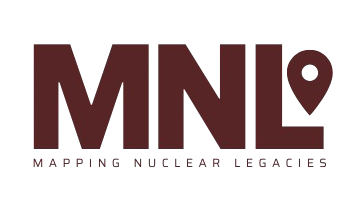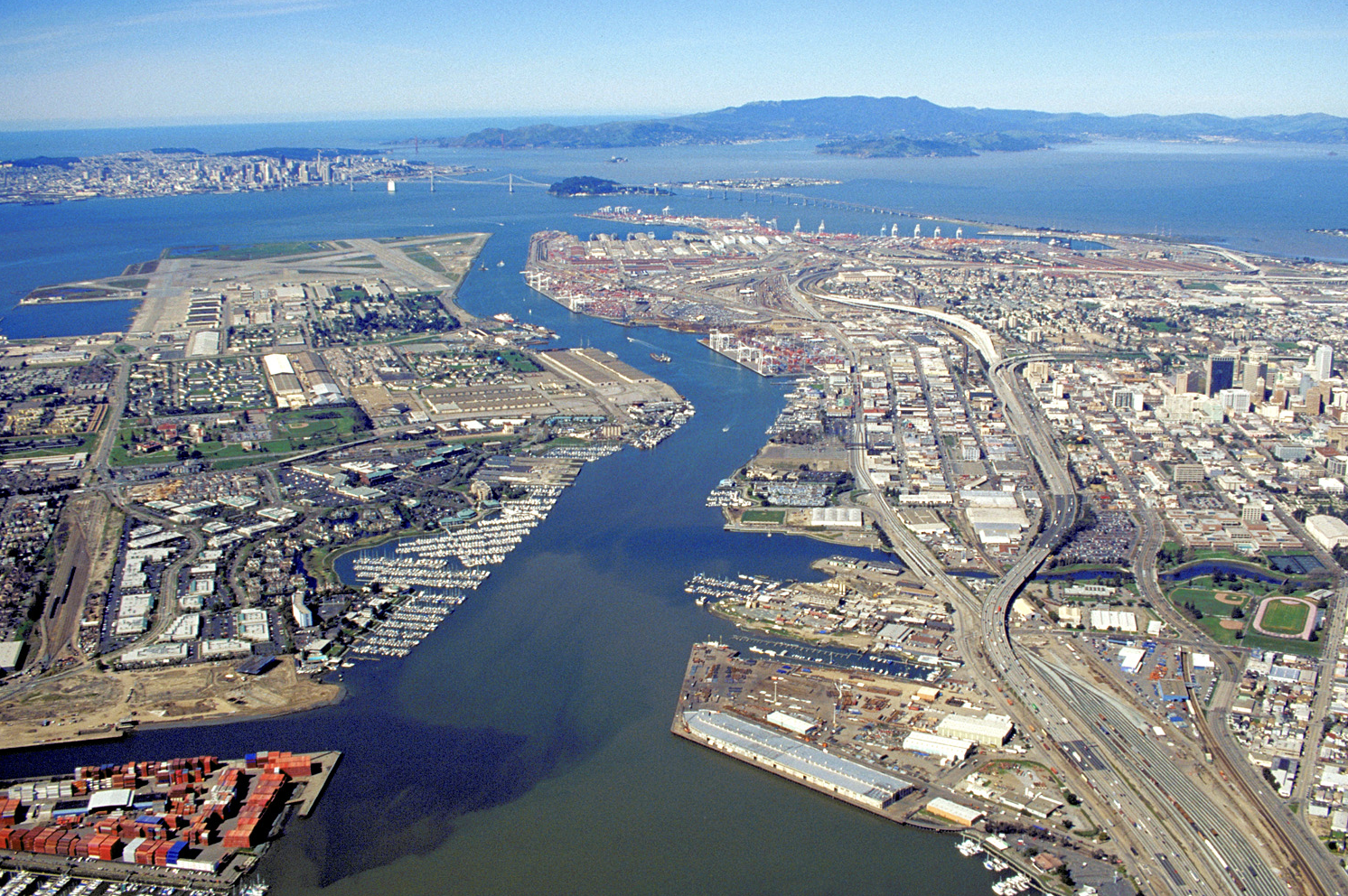Table of Contents
- Introduction
- News, and Other Relevant Links
- Related Organizations and Resources
- Featured Resolutions
Oakland’s legacy reflects persistent opposition to nuclear threats, even in the face of federal resistance.
Oakland and its surrounding areas have long been a central location for U.S. nuclear development. The city’s location on the eastern side of the San Francisco Bay made it a hub for military and research facilities, including Lawrence Livermore National Laboratory in nearby Livermore, the former Naval Air Station Alameda, the Concord Naval Weapons Station, and even the Port of Oakland itself. This was due to its strategic location, strong transportation links, and existing defense industry presence. By the 1980s, many local activists and officials raised concerns about nuclear issues due to risks such as potential radioactive contamination. For example, plutonium leaks at Livermore Lab sparked fears about public safety. In 1982, voters approved a nuclear freeze referendum, and in 1986, the Oakland City Council supported a comprehensive nuclear test ban. In November 1988, Oakland’s citizens passed Measure T, or the Oakland Nuclear Free Zone Act, by a margin of 57% (43,864 votes) to 43% (33,747 votes). Measure T was one of the nation’s strictest ordinances; it banned the production and stationing of nuclear weapons and reactors in Oakland, prohibited the storage and transportation of nuclear materials within the city, and barred the city from contracting with any companies that were knowingly involved in nuclear weapons work.
However, the federal government challenged Oakland’s new law. In September 1989, the U.S. Department of Justice sued the city to overturn the ordinance, arguing that Oakland had overstepped its authority by interfering with federal jurisdiction over national defense and energy. In April 1990, a federal judge agreed, declaring the ordinance “invalid on its face” and ruling that Oakland could not prohibit nuclear weapon activities or shipments connected to federal military operations. While the city was allowed to post anti-nuclear signs and divest city funds in protest, most of the ordinance’s enforceable aspects were struck down. Ultimately, Oakland’s leaders chose not to pursue an appeal. Instead, in March and April 1992, the City Council unanimously reinstated the nuclear-free zone through a new ordinance (No. 11478 CMS) reaffirming Oakland’s commitment and introducing additional restrictions on contracts and investments in nuclear weapons firms. Today, the city still upholds aspects of this policy: companies bidding for city contracts must submit a “Nuclear Free Zone” disclosure form certifying that they do not engage in nuclear weapons work.
Despite the setbacks in 1990, anti-nuclear activism has remained strong in Oakland. Local peace and environmental groups, including Peace Action California, the Western States Legal Foundation, and Tri-Valley CAREs continue to monitor nuclear risks. Former Councilmember Wilson Riles Jr. once cautioned that during the 1989 Loma Prieta earthquake, when a freeway collapsed in West Oakland, a nightmarish scenario could have occurred if a nuclear shipment had passed through at that time. In recent years, Oakland’s leaders have also taken symbolic stands; for instance, Mayor Sheng Thao joined mayors nationwide in 2023 in passing a resolution calling for urgent action to prevent nuclear war. By combining local resolutions, grassroots protests, and collaboration with global disarmament movements, Oakland’s legacy reflects persistent opposition to nuclear threats, even in the face of federal resistance.
News, and Other Relevant Links
“U.S. Government Attacks Oakland Anti-Nuclear Law”
Roanoke Times (1990)
Los Angeles Times (1990)
“Nuclear-Free Zone Challenged”
Washington Post (1989)
“Effort to Derail Nuclear-Free Zones Reported”
Los Angeles Times (1990)
“Activists ready to protest nuke shipment in Bay”
SFGate (1998)
City of Oakland Nuclear Free Disclosure Form
City of Oakland (2023)
Related Organizations and Resources
Featured Resolutions
Public Meeting Summaries
RESOLUTIONS
1986: Oakland City Council Resolution
In 1986, the Oakland City Council passed a resolution that declared Oakland a Nuclear Free Zone. This resolution was one of the first major public commitments by a city to oppose the production and deployment of nuclear weapons within its limits. Although it was primarily symbolic, it expressed the city’s desire to set boundaries on the nuclear arms race. The resolution laid the groundwork for Measure T in 1988, which was more enforceable. This shows a strong local support for nuclear disarmament and reflects citizens’ concerns about the risks posed by nearby nuclear research and weapons facilities.
RESOLUTIONS
1988: Measure T (Oakland Nuclear Free Zone Act)
In November 1988, voters in Oakland, California, approved Measure T, a significant local ordinance that officially declared the city a Nuclear Free Zone. Passed by a margin of 57%, this measure served both as a symbolic statement against nuclear weapons and as an effort to cut the city’s material and economic ties to the nuclear arms industry.
The ordinance, later codified as Ordinance No. 11062 C.M.S., contained several strict provisions. It prohibited the City of Oakland from engaging in business with entities knowingly involved in nuclear weapons work, including corporations and their subsidiaries. It also banned the transportation, storage, or deployment of nuclear weapons and radioactive materials within the city limits. Any planned nuclear-related activity within the city, whether by private contractors or federal agencies, must be publicly disclosed, with a 45-day notice period and a public hearing. Furthermore, the measure mandated that the city divest from financial institutions or companies with connections to nuclear weapons production. It also called for installing “Nuclear Free Zone” signs at city borders to communicate Oakland’s position.
Measure T positioned Oakland among a rising number of U.S. cities and counties that adopted nuclear-free declarations in the 1980s, going further than most by implementing enforceable regulatory and financial restrictions. Local peace groups and disarmament advocates praised the ordinance as a model for municipal anti-nuclear activism. However, opponents, including defense contractors and some legal scholars, cautioned that the city might be overstepping its constitutional authority.
RESOLUTIONS
1990: Federal Court Challenge and Ruling
Shortly after the ordinance took effect in 1989, it was challenged in federal court. The U.S. Department of Justice filed lawsuits, arguing that Measure T unlawfully intruded into areas of exclusive federal jurisdiction. In April 1990, U.S. District Judge John P. Vukasin Jr. ruled against significant portions of the ordinance, declaring it unconstitutional on several grounds.
The court determined that federal authority over national defense and nuclear regulation, as established by the Supremacy Clause of the U.S. Constitution, preempted any local attempts to regulate nuclear weapons. Additionally, the court found that Measure T violated the Commerce Clause, which prohibits local governments from interfering with interstate commerce, including the movement of nuclear-related goods and services. The ordinance was also deemed to breach the doctrine of intergovernmental immunity, which prevents local governments from interfering with federal agencies or contractors carrying out federal responsibilities.
While the court’s decision invalidated the enforceable aspects of Measure T, such as its contracting bans and transport restrictions, it did not eliminate the ordinance. The ruling allowed Oakland to retain the symbolic and declarative elements of the law, such as signage, resolutions, and aspirational language, as long as they did not conflict with federal policy. Nonetheless, this decision established a clear limit on how far municipalities could go in regulating national security issues, even in the context of peace activism.
RESOLUTIONS
1992: Ordinance No. 11478
Following the court’s decision, the Oakland City Council aimed to uphold the intent and spirit of Measure T while adhering to legal restrictions. In 1992, the council passed Ordinance No. 11478 C.M.S., reaffirming the city’s nuclear-free commitment “to the extent legally possible.” This ordinance effectively reinstated the nonbinding aspects of Measure T. It directed city departments to continue pursuing their goals as long as they did not conflict with state or federal law.
Ordinance 11478 maintained Oakland’s identity as a city opposed to the nuclear weapons industry, allowing for the posting of signs, issuing public statements, and promoting ethical contracting and investment policies. Although this measure did not carry the enforceability of the original 1988 ordinance, it served as a civic declaration of values, keeping nuclear disarmament on the city’s agenda. The passage of this ordinance also
demonstrated the lasting impact of grassroots activism on municipal policy, even when influenced by higher legal authority.

